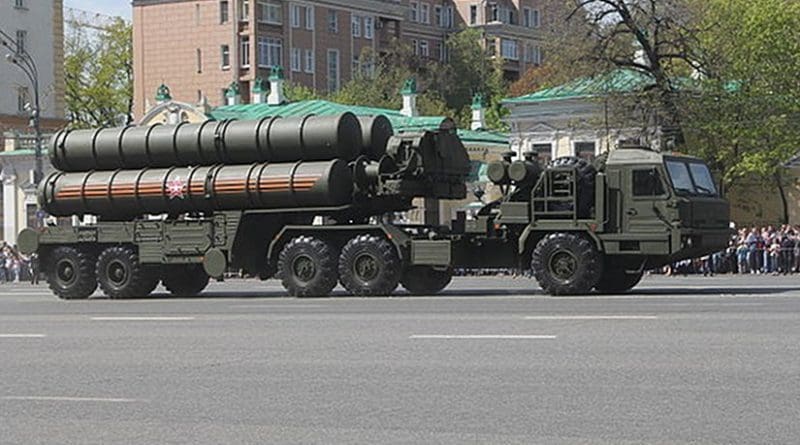India’s Quest For A Ballistic Missile Defence Shield – OpEd
A Ballistic Missile Defence (BMD) system is a system that defends any country against possible incoming missile threat. It intercepts targets and destroys enemy missile enroute. A BMD missile flights through three phases: boosts, mid-course and terminal. Usually the radar of the BMD missile intercepts the missile from the opponent’s side, then tracks the target through command and control system and finally fires the interceptor missile from the launcher truck.
Other countries that have advanced missile system include the US, Russia, Israel and China. The leading BMD systems in the world are Patriot Advanced Capability-3, THAAD, S-400 Triumf and S-500. India with its aspirations for regional dominance has been trying to develop an indigenous (BMD) system since the late 90s with the start of Integrated Guided Missile Development Program (IGMDP).
The Indian BMD programme is structured as a two-tiered system with Prithvi Air Defence (PAD) for high altitude interception and Advanced Air Defence (AAD). PAD is a two-stage missile: a solid-fuel motor and liquid fuel propeller. It works with the inertial guidance navigation system with mid-course updates from the Long-Range Tracking Radar (LRTR) and active radar homing in the terminal phase. Moreover PAD is also capable of tracking 200 targets at a range of 600 km, with a maximum interception altitude of 80 km in exo-thermic-in space range.
In its quest for acquiring the Missile Defence System (MDS), India has developed Ballistic Missile System that could intercept missiles in not only endo-atmosphere i.e. within the earth’s atmosphere, but can also intercept in the exo-atmosphere. However this advancement of Indian BMD and Air Defence System (ADS) is not merely the fruits of Indian efforts. Countries like Russia, Israel and the US helped India while providing it with an access to sophisticated technology in order to advance its MDS.
Recently India plans to buy 131 surface-to-air missiles from Israel at the cost of US$70 million (S$93 million), as per the Indian Defence Ministry press release issued on January 2, 2018. The BARAK missiles made by Israel’s Rafael Advanced Defence Systems are to be used aboard India’s first locally built aircraft carrier, the INS Vikrant, which is under construction. Previously in April 2017 India and Israel signed a deal worth around US$2 billion which includes medium-range surface-to-air missiles. Israel has become a major defence supplier to India, selling an average of US$1 billion worth of military equipment each year.
Moreover not only relying on Israeli missiles, India signed an inter-governmental agreement with Russia for the purchase of the S-400s in October 2016. The estimated worth of the contract is US$ 4.5 billion. The S-400 is technologically one of the most advanced Missile Air Defence System in the world. The S-400 system is armed with the capacity which enables it to engage with the stand-off jammer and Airborne Warning and Control System (AWACS) aircraft including both ballistic and cruise missiles.
India has been briefed about the Patriot III under the long-term strategic partnership with US. It was also the view of the analyst that India might buy Patriot III from US. But the matter of the fact is that how many systems India will acquire for its Ballistic Missile Defence Shields (BMDS) because no Ballistic Missile (BM) can guarantee 100 percent interception and destruction of incoming missile. Although India is learning about the new technologies for the creation of its BMDS but its previous record of building the indigenous weapon system is not very encouraging. The best examples are the failed Arjun Main Battle Tank (MBT), the rejected Indian New Small Arms System (INSAS) rifle, and most recently Indian indigenously built SSBN Arihant which went critical twice.
Although Indian BMDS is particularly designed against Pakistan however, alternatively it would not be wrong to say that India might not be able to defend itself from Pakistan’s missiles. Petr Topychkanov, a senior researcher at the Carnegie Moscow Centre’s Non-Proliferation Programme says “despite heavy investments in developing anti-ballistic missile systems, India may not be able to fully defend itself in a conflict from strikes by Pakistani missiles”. This is true that India has been signing defence deals of millions of US dollars with Israel and it aims to acquire S-400 from Russia as well. Yet, it lacks a sophisticated BMD system which could defend it from incoming Ababeel Multiple Independent Reentry targetable Vehicles (MIRV) of Pakistan.
Subsequently Indian Ballistic missile system will give a false sense of security. Already according to a rough estimate South Asian region has one-third of the total world’s ballistic missile capability. In such a complex and volatile environment, India’s quest for BMDS will lead India with a false sense of security and might compel India to go for a nuclear first strike. Hence such a scenario undermines the strategic stability of the whole region.
*Qura tul ain Hafeez has done M Phil in international relations from Quaid-I Azam University Islamabad. She is currently working as a Research Associate at Strategic Vision Institute Islamabad. She can be reached at [email protected]


Spoken like a true Pakistani. She seems to be having more info on Indian SSBN than those in the Indian defence circles.
In times of crises, the technological development on part of India will cultivate a sense of military ‘superiority’in India, encouraging it to activate its provocative CSD strategy, under the cover of the ballistic missile shield and second strike capability. Provocative Indian actions are compelling Pakistan to not only improve the quality and quantity of ballistic missiles, but also modernize and increase the size of its entire strategic force. In this context,the country is being forced to concentrate on options like improvements in its cruise missile force and Multiple Re-entry Vehicles (MIRVs) missile, improvement in tactical missiles and assured second strike capability. The impetus is now on Pakistan to put in place any necessary countermeasures to assure its defense, before the Indian shield goes live.